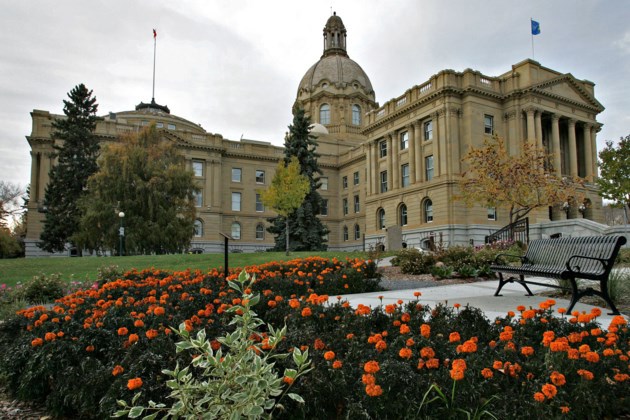The province is projecting a $367 million surplus in 2024- 25, a steep drop from the $5.2 billion forecasted for 2023-24, Alberta Finance Minister Nate Horner told reporters at an afternoon press conference where he detailed a “difficult” 2024 budget.
The blame lies with debt servicing costs; the escalating needs of the province’s contingency fund, which pays for emergencies such as wildfires and droughts; and “other pressures due to the population increase we’ve seen across ministries,” Horner said.
The projected $367 million surplus may get eaten up quickly if the province’s $2 billion contingency fund can’t cover drought and wildfires this summer. Last year the province spent $2.9 billion on these emergencies.
As promised in the province’s last fiscal update, 50 per cent of the 2023–24 surplus will go to paying down Alberta’s debt, while the other 50 per cent will go to either the Alberta Heritage Savings Trust Fund, a one-off project or to more debt repayment.
Softening oil prices are likely part of the reason the UCP government is tightening Alberta’s purse strings. The province expects that the price of a barrel of West Texas Intermediate will drop to $74 from $76.50 per barrel this year and remain there until at least 2027.
Although Smith signalled last week that she wants to stockpile more money in the Heritage Fund, the province is not planning to add to the fund in 2025 or 2026, according to budget documents.
“Retained earnings is the key,” Horner said. “I think over $48 billion has been taken out of the fund since its inception in 1976,” but now the province will not be pulling money out of the fund.
Budget documents from the province show Alberta is likely to “buck the trend” globally when it comes to economic growth. The province forecasts that GDP will “accelerate to 2.9 per cent” ($456 billion) in 2024 – 25 from 2.3 per cent ($483.9 billion).
“Positive business sentiment is driving investment intentions across many sectors, despite heightened uncertainty,” according to the report.
Yet the province’s revenue is expected to drop to $73.5 billion in the coming year. That’s $2.1 billion lower than 2023-24’s forecasted $75.6 billion. The province also plans to spend $2.2 billion more in 2024 – 25 than in the previous fiscal year.
Population growth is likely to remain high. The province grew by 4.1 per cent in 2023 – 24, and it is projected to grow an additional 3.7 per cent in 2024 – 25.
Additional funding for health care, education and social services will not match the pace of population growth.
Health funding is expected to land at roughly $24 billion in 2023 – 24 and will increase to around $25.7 billion in 2024 – 25. Funding for education is projected to rise from $5.46 billion to roughly $5.7 billion.
The province plans to spend roughly $90 million all told on its move to divide Alberta Health Services into four separate health agencies, but it expects to make that money back with increased efficiencies.
The province also carved out roughly four times the amount of funding for private schools on a percentage basis than for the rest of the K-12 education system.
The Alberta Petroleum Marketing Commission, a Crown corporation that owns half of the Sturgeon Refinery, is forecasting a net loss of $525 million in 2024 – 25. That’s $224 million more than the $301 million loss forecast for 2023 -24. The Sturgeon Refinery is primarily to blame due to the decline in refined product prices, such as diesel, according to budget documents.
The projected $367 million surplus may get eaten up quickly if the province’s $2 billion can’t cover drought and wildfires this summer. Last year the province spent $2.9 billion on these emergencies.
Also revealed in the budget: the $31 million cost for the province to buy out Dynalife, the private lab services provider that temporarily took over all testing last year.
“I know Dynalife was successful in other provinces,” Horner said. “But it certainly didn’t work here.”
The Gazette will have more to come on the 2024 budget.



